AMD A10-5800K & A8-5600K Review: Trinity on the Desktop, Part 1
by Anand Lal Shimpi on September 27, 2012 12:00 AM ESTAfter years of waiting, AMD finally unveiled its Llano APU platform fifteen months ago. The APU promise was a new world where CPUs and GPUs would live in harmony on a single, monolithic die. Delivering the best of two very different computing architectures would hopefully pave the way for a completely new class of applications. That future is still distant, but today we're at least at the point where you can pretty much take for granted that if you buy a modern CPU it's going to ship with a GPU attached to it.
Four months ago AMD took the wraps off of its new Trinity APU: a 32nm SoC with up to four Piledriver cores and a Cayman based GPU. Given AMD's new mobile-first focus, Trinity launched as a notebook platform. The desktop PC market is far from dead, just deprioritized. Today we have the first half of the Trinity desktop launch. Widespread APU availability won't be until next month, but AMD gave us the green light to begin sharing some details including GPU performance starting today.
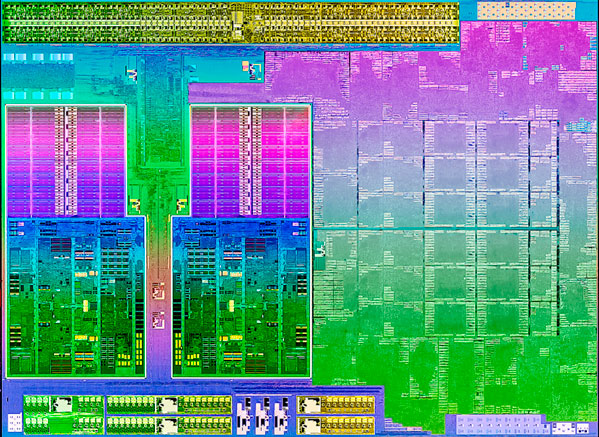
AMD's Trinity APU, 2 Piledriver modules (4 cores)
We've already gone over the Trinity APU architecture in our notebook post earlier this year. As a recap, Piledriver helped get Bulldozer's power consumption under control, while the Cayman GPU's VLIW4 architecture improved efficiency on the graphics side. Compared to Llano this is a fairly big departure with fairly different CPU and GPU architectures. Given that we're still talking about the same 32nm process node, there's not a huge amount of room for performance improvements without ballooning die area but through architecture changes and some more transistors AMD was able to deliver something distinctly faster.
| Trinity Physical Comparison | |||||
| Manufacturing Process | Die Size | Transistor Count | |||
| AMD Llano | 32nm | 228mm2 | 1.178B | ||
| AMD Trinity | 32nm | 246mm2 | 1.303B | ||
| Intel Sandy Bridge (4C) | 32nm | 216mm2 | 1.16B | ||
| Intel Ivy Bridge (4C) | 22nm | 160mm2 | 1.4B | ||
On the desktop Trinity gets the benefit of much higher TDPs and thus higher clock speeds. The full lineup, sans pricing, is below:
Remember the CPU cores we're counting here are integer cores, FP resources are shared between every two cores. Clock speeds are obviously higher compared to Llano, but Bulldozer/Piledriver did see some IPC regression compared to the earlier core design. You'll notice a decrease in GPU cores compared to Llano as well (384 vs. 400 for the top end part), but core efficiency should be much higher in Trinity.
Again AMD isn't talking pricing today, other than to say that it expects Trinity APUs to be priced similarly to Intel's Core i3 parts. Looking at Intel's price list that gives AMD a range of up to $134. We'll find out more on October 2nd, but for now the specs will have to be enough.
Socket-FM2 & A85X Chipset
The desktop Trinity APUs plug into a new socket: FM2. To reassure early adopters of Llano's Socket-FM1 that they won't get burned again, AMD is committing to one more generation beyond Trinity for the FM2 platform.
The FM2 socket itself is very similar to FM1, but keyed differently so there's no danger of embarrassingly plugging a Llano into your new FM2 motherboard.
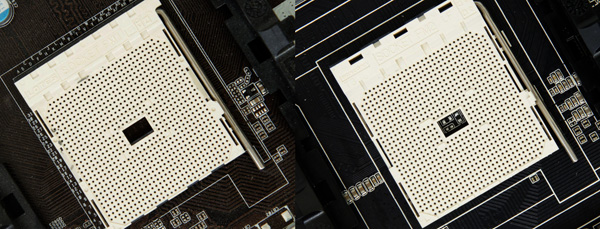
Socket-FM1 (left) vs. Socket-FM2 (Right)
AMD both borrows from Llano as well as expands when it comes to FM2 chipset support. The A55 and A75 chipsets make another appearance here on new FM2 motherboards, but they're joined by a new high-end option: the A85X chipset.
The big differentiators are the number of 6Gbps SATA and USB 3.0 ports. On the A85X you also get the ability to support two discrete AMD GPUs in CrossFire although obviously there's a fairly competent GPU on the Trinity APU die itself.
The Terms of Engagement
As I mentioned earlier, AMD is letting us go live with some Trinity data earlier than its official launch. The only stipulation? Today's preview can only focus on GPU performance. We can't talk about pricing, overclocking and aren't allowed to show any x86 CPU performance either. Obviously x86 CPU performance hasn't been a major focus of AMD's as of late, it's understandable that AMD would want to put its best foot forward for these early previews. Internally AMD is also concerned that that any advantages it may have in the GPU department are overshadowed by their x86 story. AMD's recent re-hire of Jim Keller was designed to help address the company's long-term CPU roadmap, however until then AMD is still in the difficult position of trying to sell a great GPU attached to a bunch of CPU cores that don't land at the top of the x86 performance charts.
It's a bold move by AMD, to tie a partial NDA to only representing certain results. We've seen embargoes like this in the past, allowing only a subset of tests to be used in a preview. AMD had no influence on what specifics benchmarks we chose, just that we limit the first part of our review to looking at the GPU alone. Honestly with some of the other stuff we're working on I don't mind so much as I wouldn't be able to have a full review ready for you today anyway. Our hands are tied, so what we've got here is the first part of a two part look at the desktop Trinity APU. If you want to get some idea of Trinity CPU performance feel free to check out our review of the notebook APU. You won't get a perfect idea of how Piledriver does against Ivy Bridge on the desktop, but you'll have some clue. From my perspective, Piledriver seemed more about getting power under control - Steamroller on the other hand appears to address more on the performance side.
We'll get to the rest of the story on October 2nd, but until then we're left with the not insignificant task of analyzing the performance of the graphics side of AMD's Trinity APU on the desktop.
The Motherboard
AMD sent over a Gigabyte GA-F2A85X-UP4 motherboard along with an A10-5800K and A8-5600K. The board worked flawlessly in our testing, and it also gave us access to AMD's new memory profiles. A while ago AMD partnered up with Patriot to bring AMD branded memory to market. AMD's Performance line of memory includes support for AMD's memory profiles, which lets you automatically set frequency, voltage and timings with a single BIOS setting.
We've always done these processor graphics performance comparisons using DDR3-1866, so there's no difference for this review. The only change is we only had to set a single option to configure the platform for stable 1866MHz operation.
Processor graphics performance scales really well with additional memory bandwidth, making this an obvious fit. There's nothing new about memory profiles, this is just something new for AMD's APU platform.


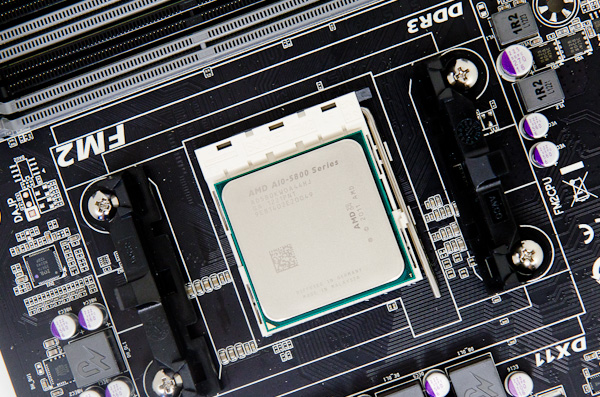
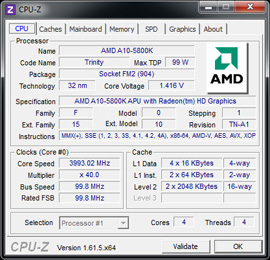
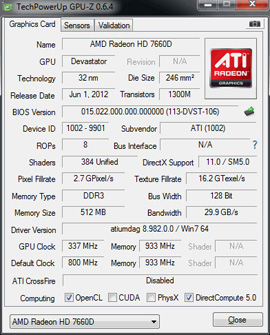
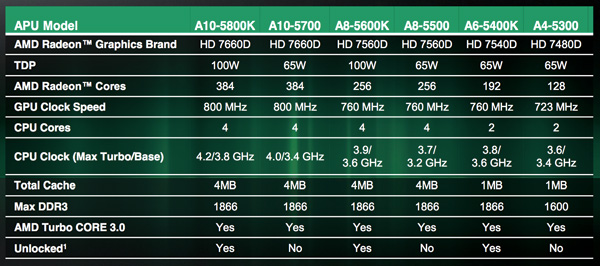

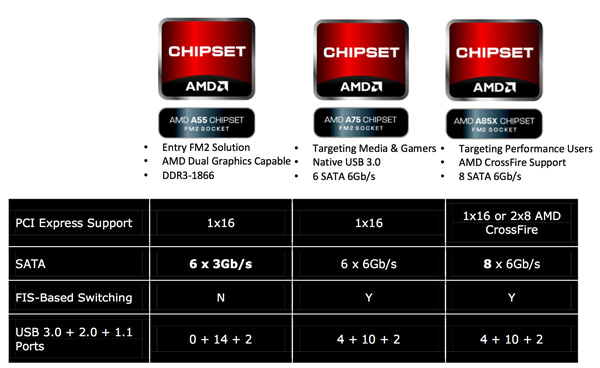






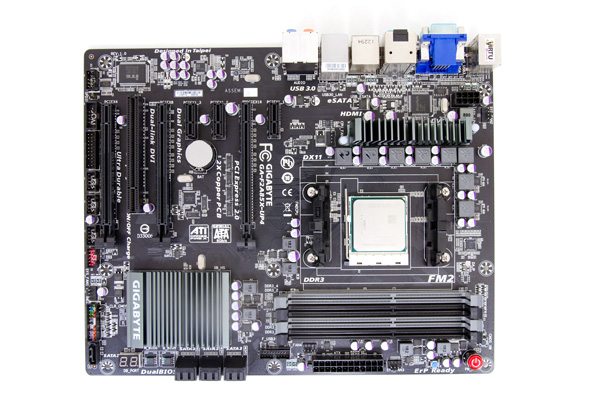

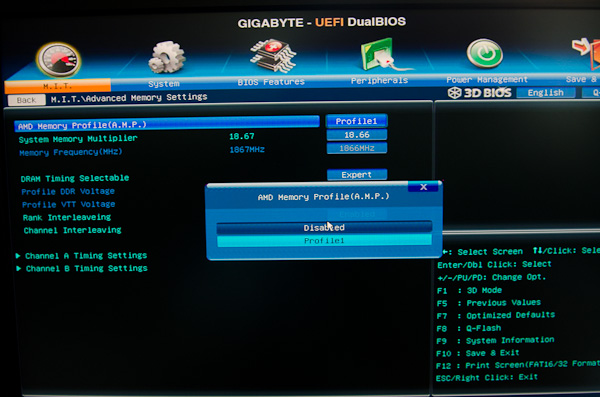








139 Comments
View All Comments
leexgx - Saturday, October 6, 2012 - link
T** Hardware i have made sure i never goto there web site again (even saying there website name as google counts that towards stats)most stuff on there cant be trusted
blackmagnum - Thursday, September 27, 2012 - link
I hope AMD aim their products for first place in the best price/ performance race with Intel. This seems the only way they will be bought other than for the health of competition or nostalgic sense of pity.duploxxx - Thursday, September 27, 2012 - link
pity for what? do you really think you need more CPU perfromance then a Piledriver core deliver? Do you really think that the Trinity isn't good enough power consumption wise.Its fools who believe they need an i7 to run daily desktop usage. spend the wasted money of an i7 on a fast disc (SSD) and your overall platform experience and performance will be much higher then your so called fixed brand name.
daos - Thursday, September 27, 2012 - link
are you serious? people use computers for more than "daily desktop usage". Video editing, graphics design, multi-threaded apps, benchmarking, even gaming...Every bit counts the larger the scale. CPUs can make a huge difference in all of the above mentioned except for maybe gaming unless at an enormous resolution like I am.
And you have to remember that everything is relative. You are concerned with wasting your money whereas the next guy could care less about an extra 2 or 3 hundred dollars for the best. Thats a drop in the bucket for him. Hell, thousands more can be a drop in the bucket if the best is what your after...its simple. Go Intel.
dagamer34 - Thursday, September 27, 2012 - link
When the average selling price of a computer is $450 in the US, I don't see how that really includes any of the things you listed above.Alexvrb - Thursday, September 27, 2012 - link
Heck, for most people, a Tegra 3 or similar in a tablet is enough computing power. A lot of people just stroll into a store and buy the advertised on-sale laptop for $300-400. For these people an APU might not be a bad choice, given that the lower-end Intel chips all have horribly crippled GPUs.lwatcdr - Thursday, September 27, 2012 - link
"Video editing, graphics design, multi-threaded apps, benchmarking, even gaming..."Some do but more and more of those tasks really benifit from a GPU boost. Most Adobe products now use openCL so they can take advantage of the GPU. That will cover Video editing, graphics design and gaming. multi-trheaded apps benifit more form core count than raw cpu and most multi-threaded apps will do just fine on th A10.
Benchmarking? Really that is called a hobby unless you are doing it to test systems for a living. You do not buy hardware just to bet a higher benchmark score you Benchmark hardware to find the cheapest way to get a task done in a reasonable amount of time. Anything else is a hobby and while that is all fine and good it is a tiny fringe element of a fraction of a percentage of the PC market.
Denithor - Thursday, September 27, 2012 - link
But this is the desktop market. It's simply too easy to install a discrete GPU that is tons faster than any iGPU, even this new Trinity. Integrated GPU just doesn't cut it for most of those applications.Maybe for an HTPC. But that's honestly the only place I'd even consider pointing anyone toward an APU over a CPU+GPU.
chrnochime - Thursday, September 27, 2012 - link
There are always people who make stupid blanket statements like yours. "People" would mean everyone. You not writing "some" in there basically means you think everyone think the way you do. If that were not the case your sentence would not have been written that way.Don't like my nitpicking? Don't write stupid blanket statements then.
mikato - Monday, October 1, 2012 - link
what do you mean "you people"?